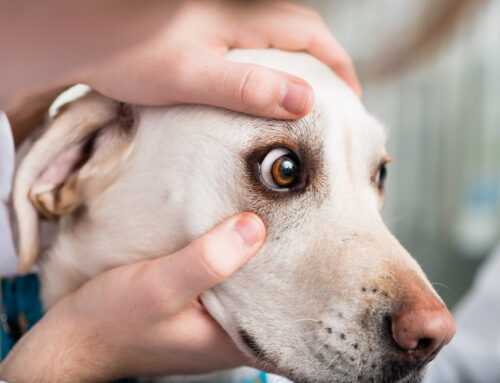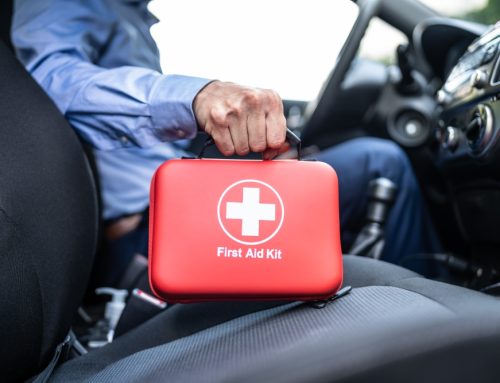It is probably more like a human emergency room than you may think. To state the obvious, you can expect to pay more and to have longer wait times. Here’s what you can expect when taking your pet to the ER, or, more specifically, to Southern Arizona Veterinary Specialty & Emergency Center.
What Should You Expect When Taking Your Pet to the ER?
It goes something like this…
A Wednesday afternoon and you come home from work to find your beloved cat or dog is not doing well. Either they have vomited, diarrhea, limping or got into a scuffle with a housemate, and your regular vet closes in an hour and they can’t see you for another 3 days. After calling around, your only options are the urgent cares in town, but now even those are closed while you frantically searched for other vets.
Just like the human ER, the veterinary ER is open 24/7, always accepts walk-ins, and triage pets according to what is going on. You may walk in extremely worried, because your beloved pet is sick, he can’t tell you exactly what is wrong, and there’s a million things going through your head on what it could be. All you want to do is make sure he is okay.
When you walk in, you’re met by the wonderful front staff receptionist. They provide you with some paperwork to fill out and ask specific questions on why you’re there so they can relay it back to a nurse or technician. A few minutes later, the nurse comes by, asks a couple more questions, and readies to triage your pet. In this time, the skilled professional is not just looking at your pet, they are examining for any signs of trauma or distress. They do this by looking at gum color, feeling their pulse, getting a heart rate, assessing for any respiratory effort, and checking the mentation or alertness of the pet.
They do this to find any sort of physical abnormalities, and make an assessment on how stable or critical your pet is. Once the nurse or technician does their evaluation, they may say that your pet seems stable at the moment, and add your pet to the list of other stable pets waiting to be seen. Or they may state something about your pet’s condition and they would like to take a closer look, just to make sure that they are not in a critical condition, shock, or may require stabilization.
What Happens Next?
Finally, they may ask if they can take your pet to the treatment area for a further exam, either by them or a doctor. Unlike human ER medical insurance that covers most of the cost, in veterinary medicine, even if your pet is insured, you will probably still have to pay a certain amount of the bill that day/night.
Assuming that your pet is in stable condition, all that’s left is to wait for the doctor to see your pet. How long you wait really depends on what is currently going on:
- Is there a list of stable patients ahead of your, waiting to be seen?
- Are there more critical patients they may be dealing with?
- Or, did a critical patient arrive after you, bumping you and your pet down the waiting list?
What Happens Once We’ve Seen the Doctor?
In a perfect work situation, there is more than 1 doctor working or 1 doctor can multi-task efficiently, seeing multiple critical patients, giving orders for the nurses or technicians to follow, and moving on to the next patient. Unfortunately, we all know this is not a perfect world and having unlimited staff is not always possible, especially due to a shortage of emergency veterinarians and the expense of an unlimited staff to the practice.
Once seen by the doctor, he or she gives their recommendations on what they think is going on. The nurse or technician that brought you in takes that information and puts it into the computer and makes a treatment plan with prices. From there, waiting really depends on what the recommendations are. If they recommend any in-house bloodwork or radiographs (x-rays), it will probably take another 30 min to 1.5 hour to get results. Most emergency veterinarians have the capability to do in-house lab screenings, such as blood counts, blood clotting analysis, biochemistries, urinalysis, digital x-rays, and ultrasounds.
A typical bloodwork lab usually takes about 8 minutes to run, but the doctor must look at the results and interpret the information before going back to the client. For example, with x-rays, if it is not something that is super obvious like a broken bone, the doctor will send it out to a board-certified radiologist who will interpret those x-rays better than most emergency veterinarians can. They also like to send results out to specialists to make sure something was not missed.
Once they receive the results from the radiologist, the doctor reads the information, interprets it, and relays it to the owner. If they feel what you’re there for is something that doesn’t require your pet to be hospitalized, the doctor will recommend outpatient treatment. Most of the time, outpatient treatments include oral meds, some injections in hospital, subcutaneous fluids, or a mix of all three.
After the nurse goes over the treatment plan and delivers the appropriate treatment to your pet, they have other patients that need their care, as well. They move on to other patients while you wait for the doctor to complete their paperwork, something that is required by law for you and your pet to go home.
What About ER Costs?
Just like in an animal ER, a human visit is usually more expensive because they have a greater overhead cost, utilities are running 24/7, various equipment expenses, maintenance and repairs, and staff to cover all 24 hours of every single day of the week.
For example, having utilities running 24/7, as well as other daily needs to run the hospital, can include washer/dryer, internet, and supplies. Emergency Rooms need to be well-stocked with not only medications that they use every day but those used in emergency situations, as well. Along with medications, there is also specialty equipment that qualified technicians and doctors use to run in-house lab reports, create x-rays, and more. Finally, an overnight staff is usually more expensive, because so few want to work that shift, so they are compensated extra (just like our overnight staff here at SAVSEC). The costs can add up.
In reality, the average cost really depends on what is going on or what is being recommended. A visit can cost as much as $85 for just a consultation exam, compared to maybe just $40 for a referring veterinarian. It can cost as much as $5500 for an emergency surgery plus hospitalization afterwards. For example, the average outpatient visit with x-rays, bloodwork, and medications to go home with is usually around $700 to $1000. If your pet needs to be hospitalized for 24 hours after the x-rays, bloodwork, and various medications, it will probably run from $1500 to $2000. Before anything is set in stone, however, you get a treatment plan outlining all the doctor recommendations with the prices for that treatment included.
Without knowing all the specifics, the price of taking your pet to the ER cannot be gauged or determined because all of the unknown variables play the biggest role in the price of treatments.
At Southern Arizona Veterinary Specialty and Emergency Center we are happy to provide a wide range of veterinary specialty and emergency services. It is important to have a “primary care” veterinarian to keep your new family member healthy and happy with routine vaccinations and health checks. But if you find yourself in the midst of a veterinary emergency, our team of experienced veterinarians is here to help. When it comes to visiting animal hospitals, we understand that the experience can be full of stress and worry, so we aim to make things as simple as possible. For more information, get in touch with one of our experts today.








Leave A Comment